How to grow Catananche
Also known as Cupid’s Dart, this pretty member of the daisy family is a dainty, cornflower-like plant from the dry meadows of the Mediterranean. It is grown for its summer-long flowers which can be blue-purple or white, and are followed by attractive, silvery, papery seedheads which offer interest well into autumn. Gardeners also appreciate its low ‘footprint’ – i.e., the way it co-exists easily with other plants due to its slender, insignificant leaves taking up little room in the border. Of the five species, by far the most commonly grown is C. caerulea and its many cultivated forms. Although technically a perennial this is best treated as an annual in the UK as it tends not to survive our wet winters.
Historically, catananche was said to be used as an ingredient in a love potion – hence the common name.
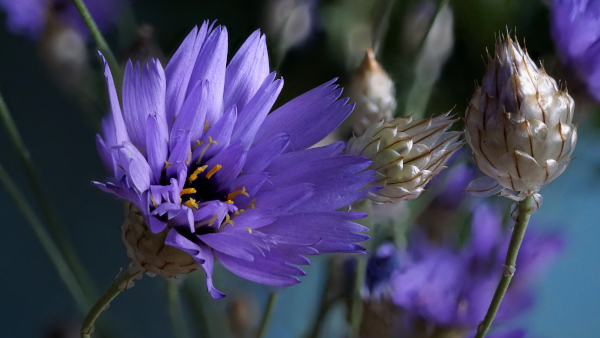
Key Information
Position
Soil Conditions
Hardiness

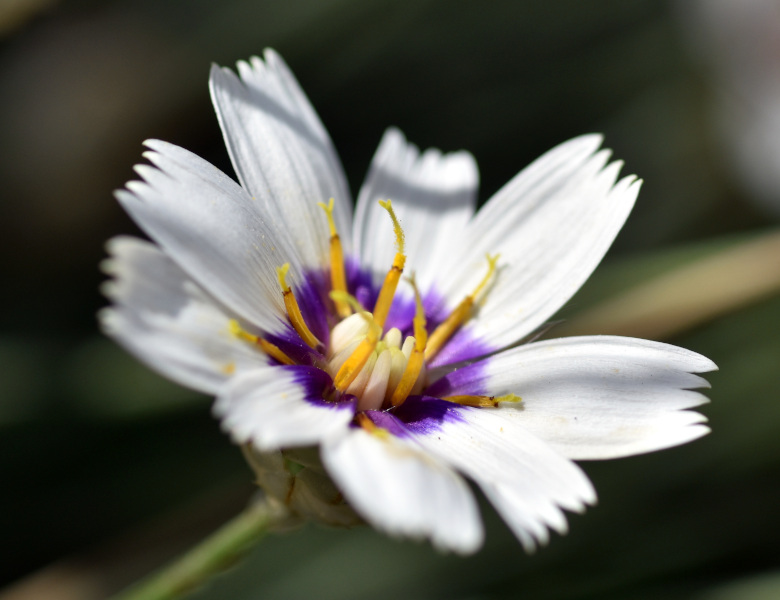
Where & when to plant Catananche
For best results, plant catananche in spring. Planting can also be carried out in summer, though be prepared to water regularly.
Plant catananche in the front to middle of a sunny border or in a wildflower meadow. It also makes a good cut flower – both fresh and dried, so is a popular feature of cutting gardens and allotments. Individually, catananche is rather a sparse plant; we recommend planting in groups of three or five for best effect.
Catananche can also be grown in a pot filled with well-draining compost.
How to plant Catananche
- For planting in the garden, dig the soil area removing any large stones and weeds and breaking up any lumps. Rake level and firm with your heels. Rake level again.
- Water plants well and allow to drain before planting.
- Dig a hole twice the size of the root-ball.
- Place the plant in the hole, ensuring the top of the root ball sits level with the surface of the soil. Too low and the plant may rot, too high and the roots can dry out.
- Backfill with soil and firm in gently with your foot.
- Soak well with water.
- Mulch around the base with horticultural grit.
- For planting in containers, first choose an appropriately sized pot – large enough to fit at least three plants in, as one on its own can look a little measly. Ensure there are plenty of drainage holes in the bottom.
- Use a good quality potting compost with a generous amount of horticultural grit mixed in (aim for around 30-40% grit), and, if not already present in the compost (check the description on the bag) some slow-release fertiliser granules.
- Start by partially filling the pot with compost; enough so that when placed on it the upper surface of the root ball is about 3cm lower than the top of the pot.
- Infill all the space surrounding the root ball with compost, firming down with your fingers then adding a little more so the plant is held tight.
- Pick up the container and lightly tap on the potting bench or ground a few times to help further settle the compost around the plant.
- Soak well with water.
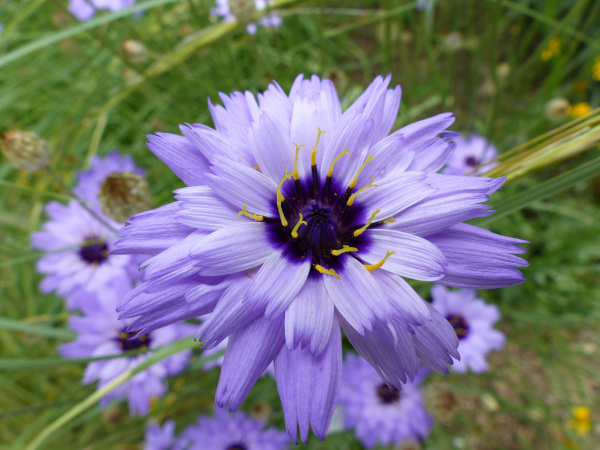
What to plant with Catananche
Catananche fits easily into a range of planting styles, though perhaps our favourite is a naturalistic approach with swaying ornamental grasses and a variety of light, airy flowers. Try stipa, miscanthus, and pennisetum for the grasses, and perennials such as Verbena bonariensis, dierama, Allium sphaerocephalon, calamintha, and astrantia for a delicate haze of blooms.
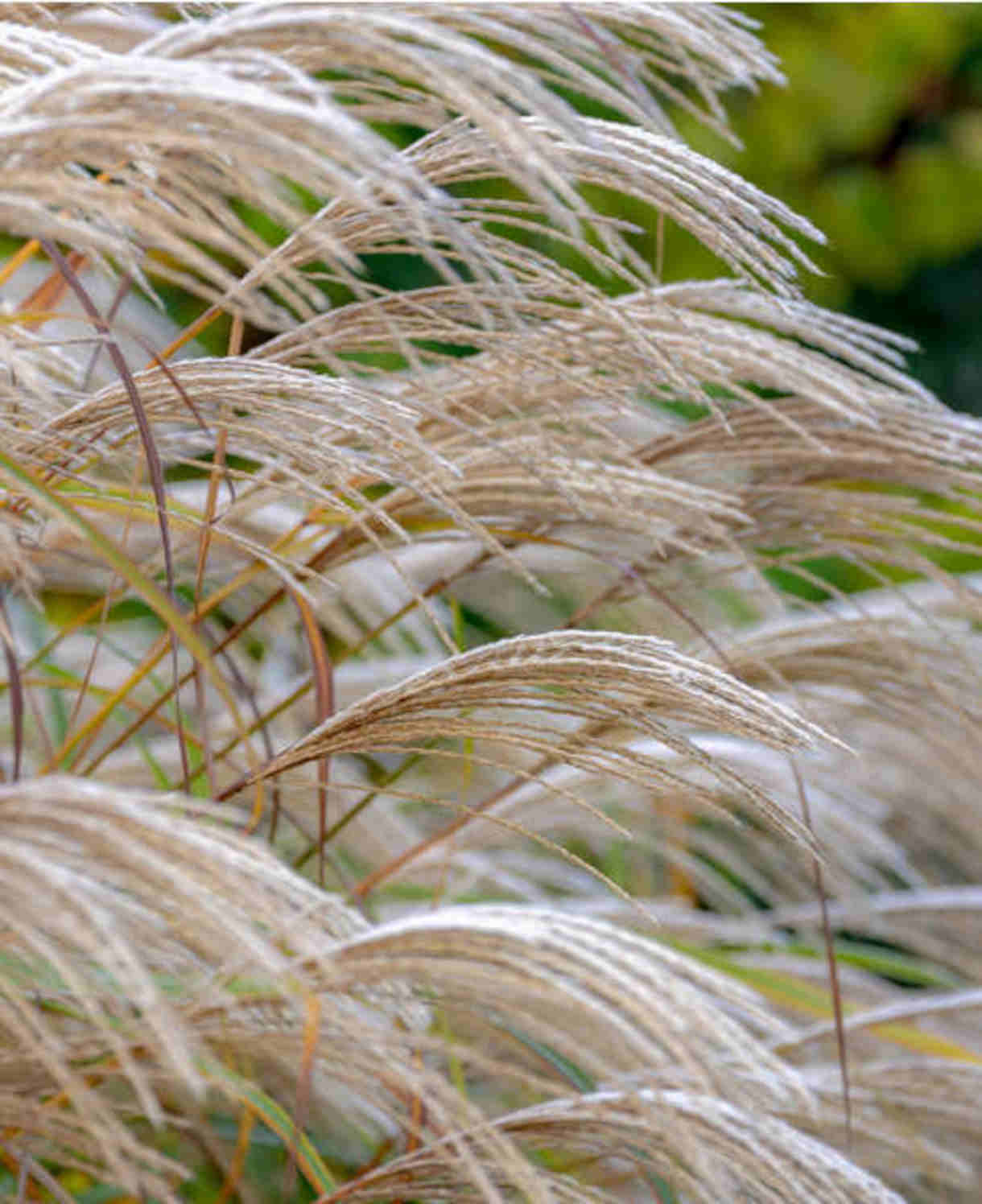
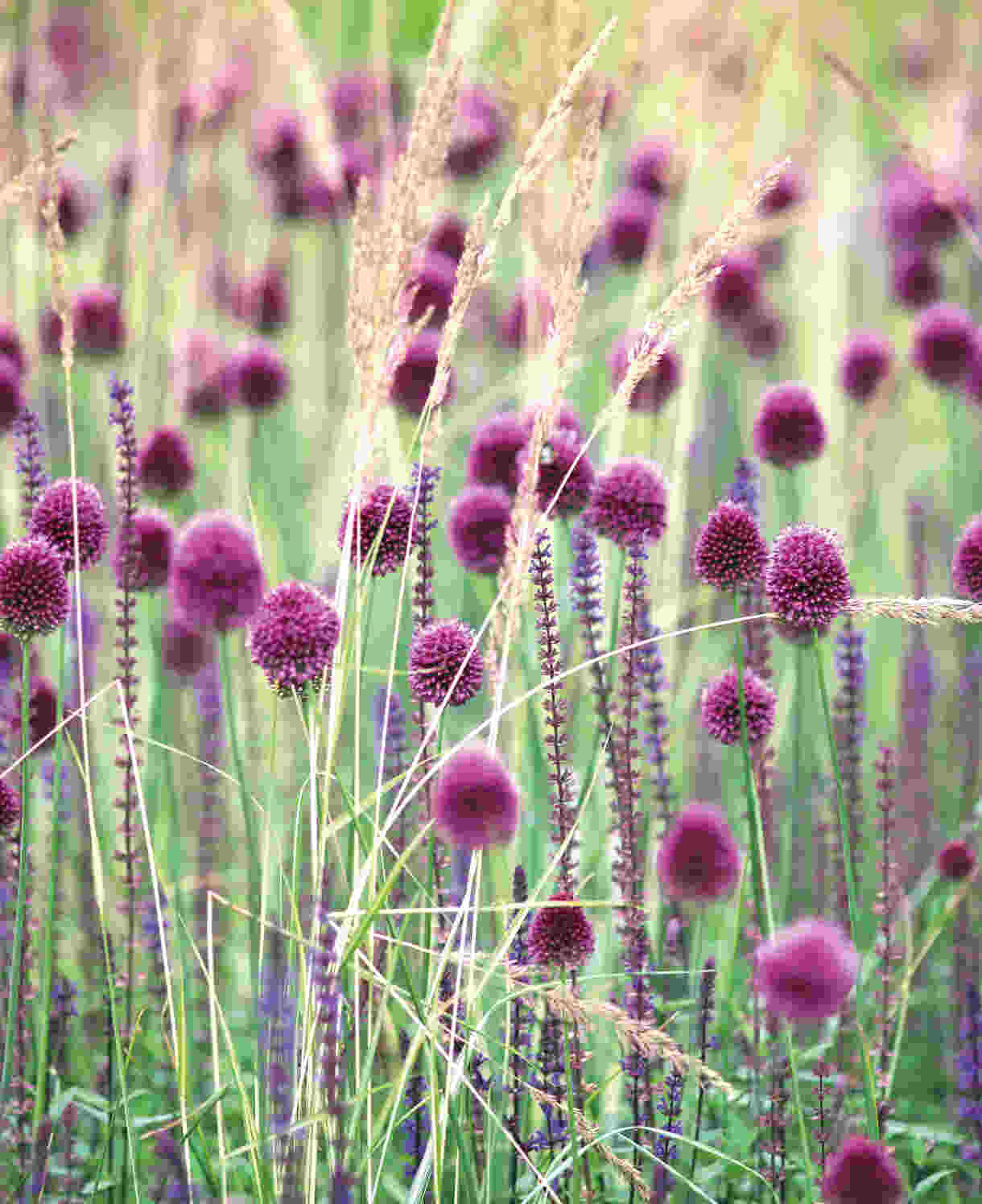
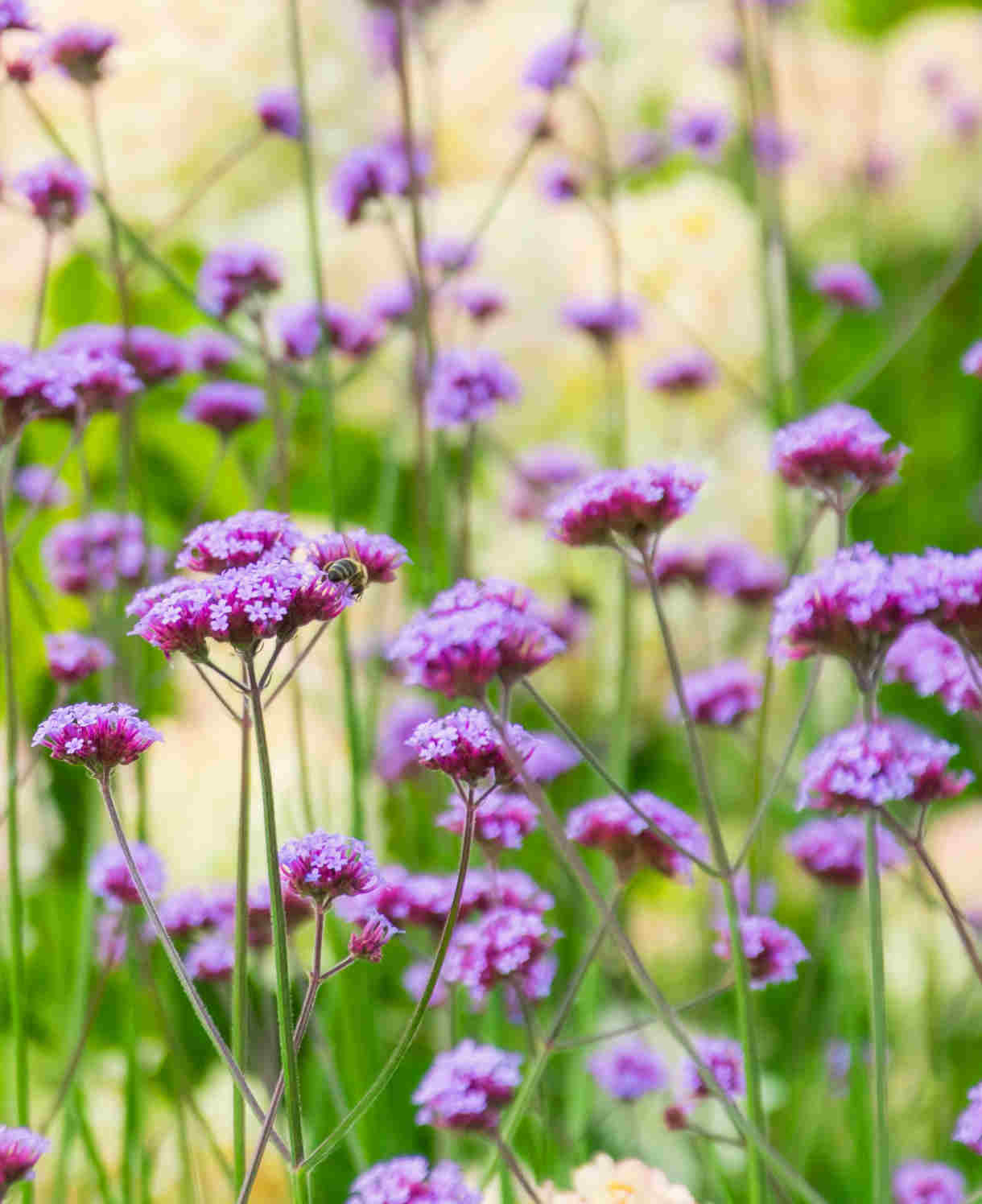
How to care for Catananche
Pruning and Deadheading
Remove spent flowers to encourage further blooms.
In autumn, either cut plants back to see if they reappear the following spring (don’t be surprised if they don’t!), or simply treat as an annual, removing to the compost heap.
Watering
Water your catananche a handful of times during the first few weeks in the ground, after which they are extremely drought-tolerant and largely self-sufficient. When watering, allowing the top few centimetres of soil to dry out between each time will help you avoid overdoing it. Wiggle your finger down into the soil to check this.
If you are growing catananche in a container, aim for infrequent big soakings (rather than little and often). Allow the compost to almost fully dry out in between.
Feeding
Catananche is adapted to growing in nutrient-poor soils and so requires no additional feeding when grown in the ground.
In a container, good quality potting compost with some slow release fertiliser granules mixed in should be enough to support a year’s worth of growth.
Cold Protection
Although cold hardy, catananche struggles with rain levels in the UK and is therefore unlikely to overwinter successfully. We recommend collecting seed and starting afresh each year.
Pests and Diseases
Catananche is largely problem-free, though can occasionally succumb to powdery mildew. This is a fungal disease which appears as a white, powder-like coating on foliage and is generally a sign that a plant is stressed – often through excessive water, though other causes can include poor airflow, over fertilizing, and insufficient sunlight.
Prune off and dispose of any affected leaves and if necessary, thin out surrounding plants to improve airflow and light levels. Do not be tempted to give the plant extra feed, as this will generate an excess of soft, new growth which is particularly susceptible to the fungus.
How to propagate Catananche
Catananche can be grown from seed, though it is worth noting that seed from named cultivars may not come ‘true’ to the parent.
- Seeds are typically ready for collecting in mid to late summer when the seedheads are dried and brown.
- Snip the seedheads from the plant using scissors or secateurs. Try to do this in dry conditions, and shake the seeds into a small, labelled paper bag or envelope. Store somewhere cool and dry until it is time to sow the following spring.
- In April, fill a seed tray or small pot with a well-draining compost mix, compressing the surface lightly with a flat piece of wood or the bottom of another pot.
- Sprinkle the seeds evenly over the surface of the compost.
- Use a garden sieve to cover with a fine layer of compost.
- Water the soil gently with a fine spray until it is evenly moist but not waterlogged.
- Place the seed tray or pots anywhere light, cool, and protected, such as a windowsill, coldframe, or unheated greenhouse.
- When the seedlings have grown large enough to handle, plant out into the garden following our ‘How to plant catananche’ section above.
An alternative approach is to direct sow in May. Follow steps 1 and 2 above, then:
- Choose a sunny, well-draining area in the garden.
- Clear any weeds and rake over the surface until you have a fine tilth.
- Scatter seeds thinly.
- Lightly rake over to incorporate with the soil.
- Water with a watering can fitted with a fine rose.
- When seedlings are large enough to handle, thin out to a spacing of approximately 30cm.
* Many plants carry Plant Breeders Rights and cannot be propagated for commercial purposes.
FAQ
- Is catananche hardy?
Yes and no! While it can withstand very cold temperatures, what it can’t tolerate is winter wet. For this reason, most UK gardeners grow it as an annual and start afresh each year. - How tall does catananche grow?
Depending on the cultivar, Catananche caerulea can grow to between 50cm and 1m. - Is catananche poisonous to dogs?
This plant has no known toxic effects.




